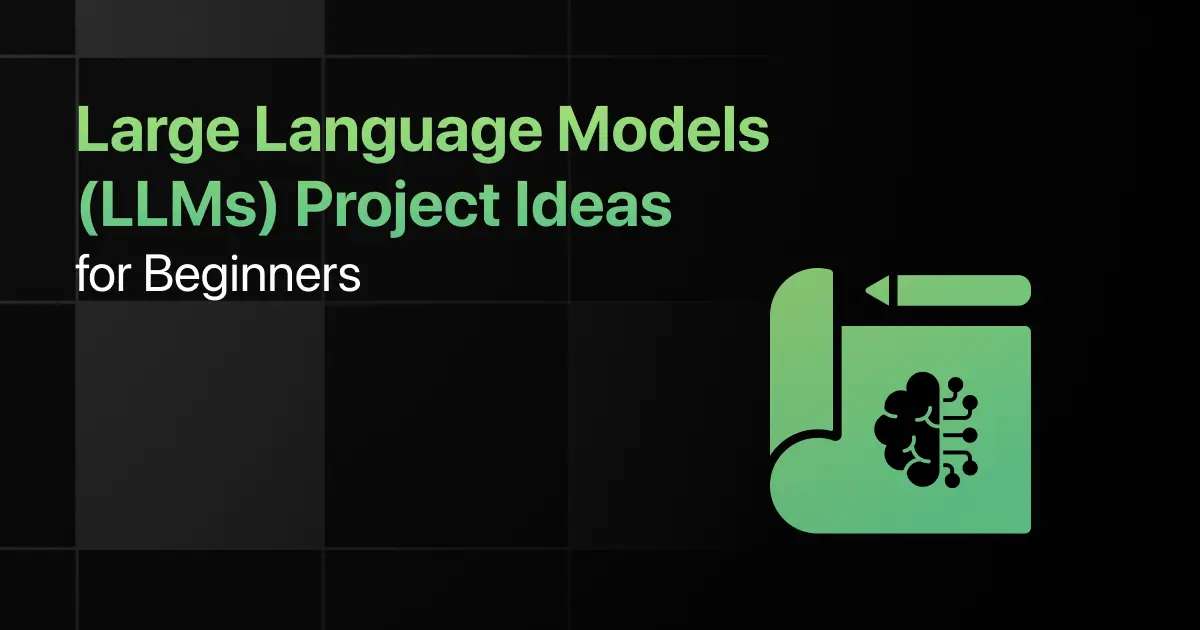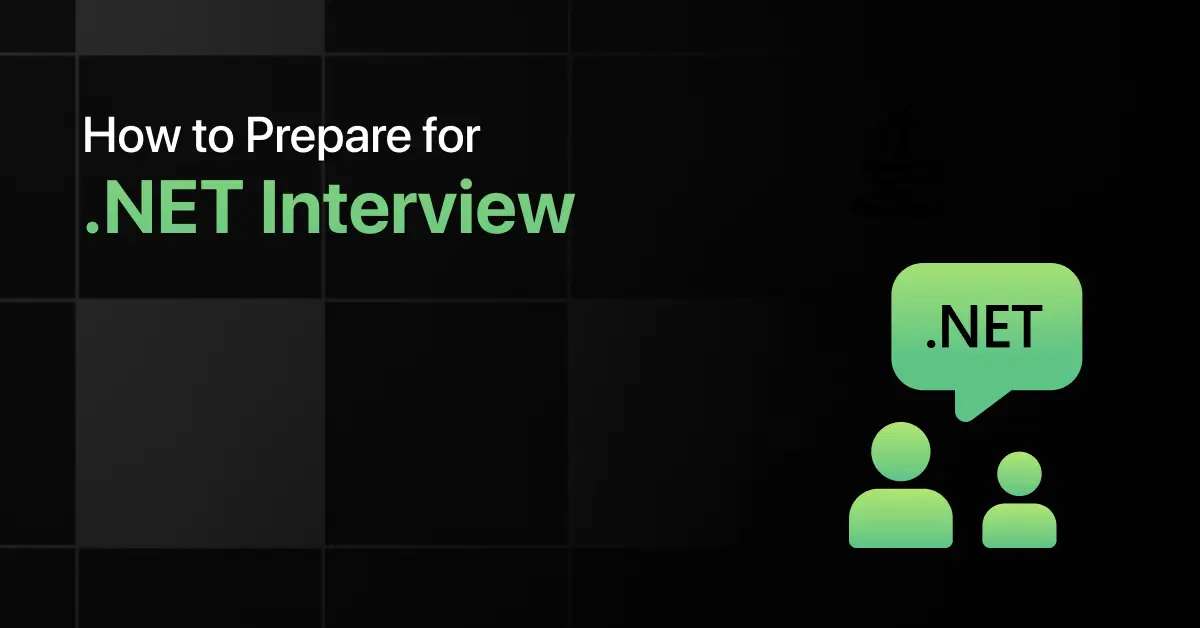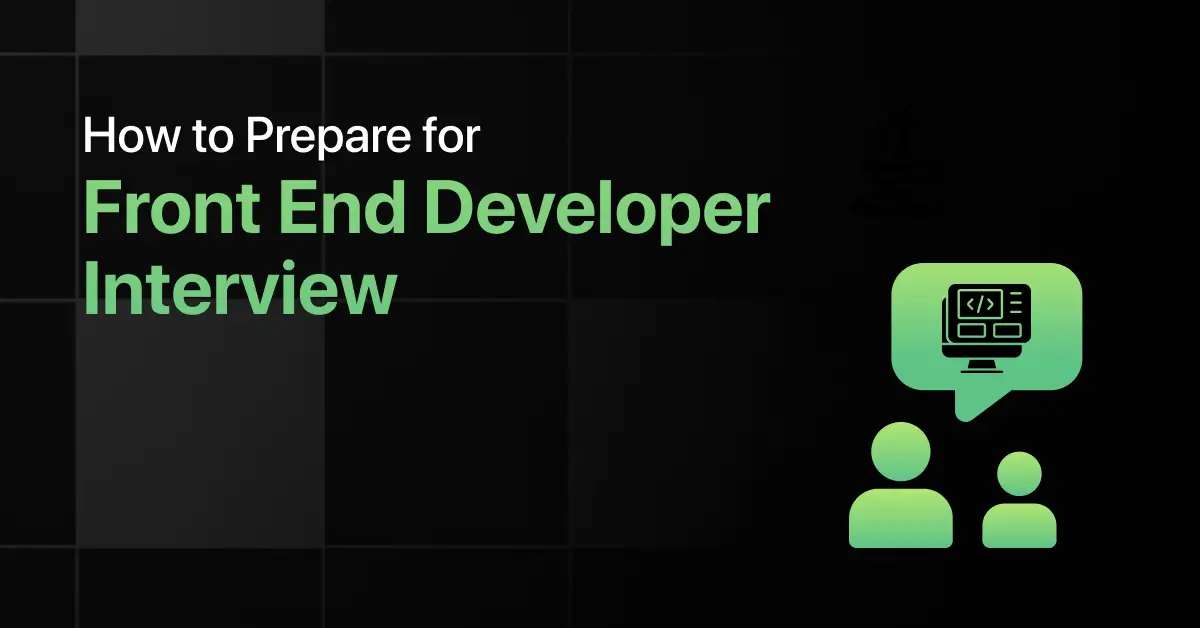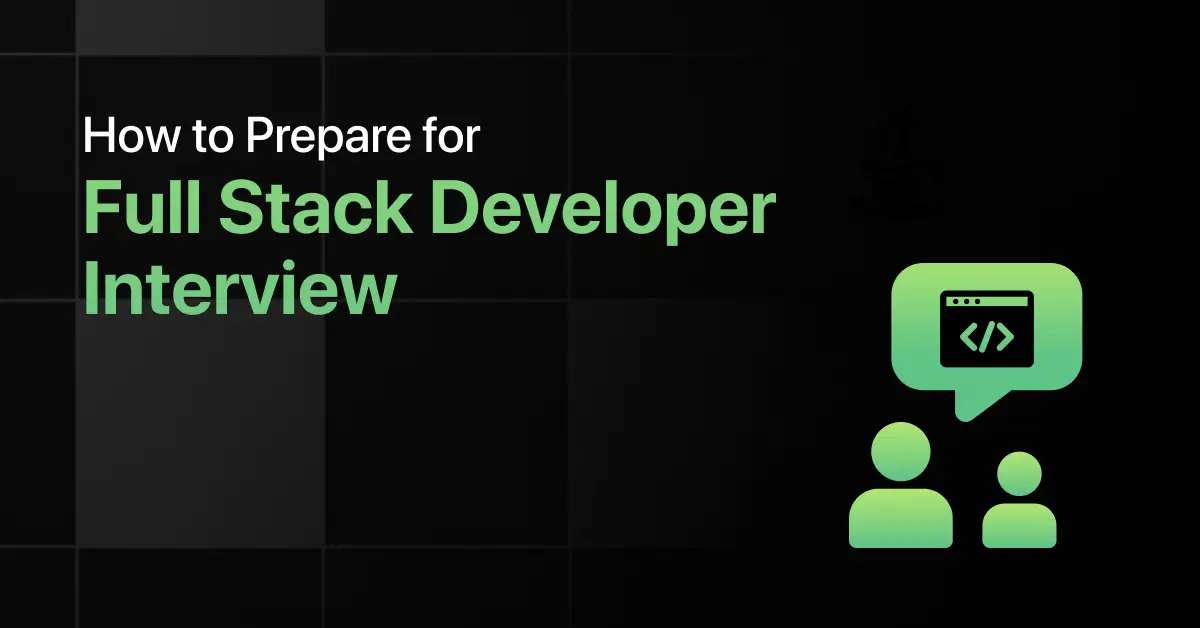Best Large Language Models (LLMs) Project Ideas for Beginners

Are you a complete beginner excited to explore the world of AI and large language models? Learning to build projects using LLMs is a great first step if you’re just starting your journey in artificial intelligence and natural language processing.
Here is a curated list of beginner-friendly LLM projects that will help you grasp deep learning fundamentals, sharpen your problem-solving skills, and strengthen your tech profile.
10 Beginner-Friendly LLM Project Ideas – Overview
Here’s an overview of the 10 best Large Language Models (LLMs) Project Ideas for beginners:
| S.No. | Project Title | Complexity | Estimated Time | Source Code |
|---|---|---|---|---|
| 1 | Sentiment Analysis Tool | Easy | 2 Hours | Get Started |
| 2 | Text Summarizer | Easy | 3 Hours | Get Started |
| 3 | Conversational FAQ Chatbot | Easy | 3 Hours | Get Started |
| 4 | Automated Email Writer | Easy | 3 Hours | Get Started |
| 5 | Movie Recommendation System | Easy | 2 Hours | Get Started |
| 6 | Chatbot Development | Easy | 5 Hours | Get Started |
| 7 | Fake News Detection | Easy | 6 Hours | Get Started |
| 8 | Question-Answering System | Medium | 7 Hours | Get Started |
| 9 | AI-Powered Content Generator | Medium | 10 Hours | Get Started |
| 10 | Text-Based Adventure Game | Medium | 10 Hours | Get Started |
Top 10 Large Language Models (LLMs) Project Ideas for Beginners
Below are the Top 10 Large Language Models (LLMs) project ideas for beginners.
1. Sentiment Analysis Tool
This is one of the large language models project ideas that focuses on classifying text data (like reviews or comments) into positive, negative, or neutral sentiments.
Through this, you’ll delve into deep learning techniques for natural language processing, including text preprocessing, feature extraction, and model training.
Duration: 2 Hours
Project Complexity: Easy
Key Concepts Covered:
- Text preprocessing (cleaning and tokenization)
- Sentiment classification using machine learning models
- Model evaluation metrics (accuracy, F1-score)
Implementation Steps:
- Collect and load a dataset (e.g., IMDB reviews).
- Preprocess the text data (remove noise, tokenize).
- Convert text to numerical features using techniques like TF-IDF.
- Train a classifier (e.g., Logistic Regression, Naive Bayes).
- Evaluate the model’s performance on a test set.
Required Pre-requisites:
- Basic Python programming knowledge
- Understanding of machine learning fundamentals
- Familiarity with NLP libraries like NLTK or spaCy
Resources Required:
- Python environment (e.g., Jupyter Notebook)
- NLP libraries: NLTK, spaCy, or TextBlob
- Machine learning libraries: scikit-learn
- Dataset: IMDB reviews or similar.
Real-World Application:
- Analyzing customer feedback to improve products/services
- Monitoring public sentiment on social media platforms
2. Text Summarizer
This is one of the LLM mini projects that involves creating a tool that condenses lengthy text documents into concise summaries, preserving essential information.
You’ll learn about deep learning architectures like encoder-decoder models and attention mechanisms used in natural language processing
Duration: 3 Hours
Project Complexity: Easy
Key Concepts Covered:
- Text preprocessing techniques
- Encoder-decoder architecture
- Attention mechanisms in deep learning
Implementation Steps:
- Collect and preprocess a dataset (e.g., news articles with summaries).
- Tokenize and convert text data into a numerical format.
- Build an encoder-decoder model with an attention mechanism.
- Train the model on the dataset.
- Evaluate the model’s performance and generate summaries.
Required Pre-requisites:
- Basic understanding of Python
- Familiarity with machine learning concepts
- Knowledge of natural language processing basics
Resources Required:
- Python environment (e.g., Jupyter Notebook)
- Libraries: TensorFlow or PyTorch, NLTK or spaCy
- Dataset: CNN/Daily Mail or similar
Real-World Application:
- Summarizing news articles for quick reading
- Generating abstracts for academic papers
3. Conversational FAQ Chatbot
This project involves creating a chatbot to answer frequently asked questions by understanding and processing user inputs.
Through this, you’ll learn about deep learning techniques in natural language processing, including intent recognition and response generation.
Duration: 3 Hours
Project Complexity: Easy
Key Concepts Covered:
- Intent recognition and entity extraction
- Dialogue management
- Response generation
Implementation Steps:
- Define intents and corresponding responses.
- Preprocess and tokenize the dataset.
- Train a model for intent classification.
- Implement a response retrieval mechanism.
- Deploy the chatbot using a suitable interface.
Required Pre-requisites:
- Basic Python programming knowledge
- Understanding of machine learning fundamentals
- Familiarity with NLP libraries like NLTK or spaCy
Resources Required:
- Python environment (e.g., Jupyter Notebook)
- NLP libraries: NLTK, spaCy
- Machine learning libraries: scikit-learn, TensorFlow, or PyTorch
- Dataset: Custom FAQ data or publicly available datasets
Real-World Application:
- Automated customer support for businesses
- 24/7 information retrieval systems for websites
4. Automated Email Writer
This is one of the simple LLM project ideas that focuses on creating a tool that generates professional and personalized emails based on user inputs.
Through this, you’ll learn about deep learning techniques in natural language processing, including sequence-to-sequence models and attention mechanisms.
Duration: 3 Hours
Project Complexity: Easy
Key Concepts Covered:
- Sequence-to-sequence (Seq2Seq) modeling
- Attention mechanisms in deep learning
- Text generation using large language models
Implementation Steps:
- Collect and preprocess a dataset of email examples.
- Tokenize and vectorize the text data.
- Build a Seq2Seq model with an attention layer.
- Train the model on the dataset.
- Develop a user interface to input prompts and generate emails.
Required Pre-requisites:
- Basic Python programming knowledge
- Understanding of machine learning fundamentals
- Familiarity with NLP libraries like NLTK or spaCy
Resources Required:
- Python environment (e.g., Jupyter Notebook)
- Deep learning libraries: TensorFlow or PyTorch
- NLP libraries: NLTK, spaCy
- Dataset: Collection of professional email examples
Real-World Application:
- Automating routine email communications in businesses
- Assisting individuals in drafting professional emails quickly
5. Movie Recommendation System
This project involves developing a system that suggests movies to users based on their preferences and viewing history.
You’ll learn about deep learning techniques in recommendation systems, including collaborative filtering and matrix factorization.
Duration: 2 Hours
Project Complexity: Easy
Key Concepts Covered:
- Collaborative filtering techniques
- Matrix factorization methods
- Evaluation metrics for recommender systems
Implementation Steps:
- Collect and preprocess the movie ratings dataset (e.g., MovieLens).
- Implement collaborative filtering algorithms to predict user preferences.
- Apply matrix factorization techniques to uncover latent features.
- Train the model and evaluate its performance using appropriate metrics.
- Develop a user interface to display personalized movie recommendations
Required Pre-requisites:
- Basic Python programming knowledge
- Understanding of machine learning fundamentals
- Familiarity with data manipulation libraries like Pandas and NumPy
Resources Required:
- Python environment (e.g., Jupyter Notebook)
- Machine learning libraries: scikit-learn, TensorFlow or PyTorch
- Dataset: MovieLens or similar
Real-World Application:
- Personalized movie recommendations on streaming platforms
- Enhancing user engagement through tailored content suggestions
6. Chatbot Development
This project involves creating a chatbot capable of understanding and conversationally responding to user inputs.
Through this, you’ll learn about deep learning techniques in natural language processing, including intent recognition and response generation.
Duration: 5 Hours
Project Complexity: Easy
Key Concepts Covered:
- Natural Language Processing
- Intent recognition and entity extraction
- Dialogue management
Implementation Steps:
- Define intents and corresponding responses.
- Preprocess and tokenize the dataset.
- Train a model for intent classification.
- Implement a response retrieval mechanism.
- Deploy the chatbot using a suitable interface.
Required Pre-requisites:
- Basic Python programming knowledge
- Understanding of machine learning fundamentals
- Familiarity with NLP libraries like NLTK or spaCy
Resources Required:
- Python environment (e.g., Jupyter Notebook)
- NLP libraries: NLTK, spaCy
- Machine learning libraries: scikit-learn, TensorFlow or PyTorch
- Dataset: Custom intent-based dataset or publicly available datasets
Real-World Application:
- Automated customer support for businesses
- 24/7 information retrieval systems for websites
7. Fake News Detection
This project focuses on developing a system that classifies news articles as real or fake based on their textual content.
Through this, you’ll learn about deep learning techniques in natural language processing, including text classification and model evaluation.
Duration: 6 Hours
Project Complexity: Easy
Key Concepts Covered:
- Text preprocessing and vectorization
- Deep learning models for text classification
- Evaluation metrics for classification models
Implementation Steps:
- Collect and preprocess a dataset of news articles labeled as real or fake.
- Convert text data into numerical format using techniques like TF-IDF.
- Build and train a deep learning model (e.g., LSTM) for classification.
- Evaluate the model’s performance using metrics like accuracy and F1-score.
- Deploy the model for real-time fake news detection.
Required Pre-requisites:
- Basic Python programming knowledge
- Understanding of machine learning fundamentals
- Familiarity with NLP libraries like NLTK or spaCy
Resources Required:
- Python environment (e.g., Jupyter Notebook)
- Deep learning libraries: TensorFlow or PyTorch
- NLP libraries: NLTK, spaCy
- Dataset: Kaggle’s Fake and Real News Dataset
Real-World Application:
- Identifying and mitigating the spread of misinformation
- Enhancing the credibility of news platforms
8. Question-Answering System
This project involves developing a system that can understand natural language questions and provide accurate answers based on a given context.
Through this, you’ll learn about deep learning techniques in natural language processing, including transformer models and attention mechanisms.
Duration: 7 Hours
Project Complexity: Medium
Key Concepts Covered:
- Transformer-based models (e.g., BERT)
- Contextual understanding and attention mechanisms
- Answer span extraction from text
Implementation Steps:
- Select a pre-trained transformer model suitable for question answering.
- Fine-tune the model using a dataset like SQuAD.
- Preprocess the input data, including tokenization and encoding.
- Train the model to predict answer spans within the context.
- Evaluate the model’s performance using appropriate metrics.
Required Pre-requisites:
- Proficiency in Python programming
- Understanding of deep learning fundamentals
- Familiarity with NLP libraries like Hugging Face Transformers
Resources Required:
- Python environment (e.g., Jupyter Notebook)
- Deep learning libraries: TensorFlow or PyTorch
- NLP libraries: Hugging Face Transformers
- Dataset: SQuAD or similar question-answering datasets
Real-World Application:
- Developing intelligent virtual assistants
- Enhancing customer support systems with automated responses
9. AI-Powered Content Generator
This project involves creating a tool that generates high-quality written content based on user inputs using advanced language models.
Through this, you’ll learn about deep learning techniques in natural language processing, including prompt engineering and fine-tuning transformer models.
Duration: 9-10 Hours
Project Complexity: Medium
Key Concepts Covered:
- Prompt engineering for content generation
- Fine-tuning transformer-based models
- Integration of AI models with web applications
Implementation Steps:
- Set up the development environment with the necessary libraries and frameworks.
- Integrate a pre-trained language model (e.g., GPT) using an API.
- Design a user interface to input prompts and display generated content.
- Implement prompt engineering techniques to guide content generation.
- Deploy the application for user access.
Required Pre-requisites:
- Proficiency in Python programming
- Understanding of deep learning fundamentals
- Familiarity with web development basics
Resources Required:
- Python environment (e.g., Jupyter Notebook)
- Deep learning libraries: TensorFlow or PyTorch
- Pre-trained language models (e.g., GPT via OpenAI API)
- Web development tools: Flask or Django for backend, HTML/CSS/JavaScript for frontend
Real-World Application:
- Automated content creation for blogs and articles
- Generating marketing copy and product descriptions
10. Text-Based Adventure Game
This project involves creating an interactive text-based game where players navigate through a story by making choices, enhanced by AI-generated narratives.
Through this, you’ll learn about deep learning techniques in natural language processing, including language model integration and dynamic content generation.
Duration: 10 Hours
Project Complexity: Medium
Key Concepts Covered:
- Natural Language Processing
- Integration of language models
- Dynamic content generation
Implementation Steps:
- Design the game’s storyline and decision points.
- Integrate a pre-trained language model to generate dynamic narratives.
- Develop a user interface for player interaction.
- Implement logic to handle player choices and game progression.
- Test and refine the game for coherence and engagement.
Required Pre-requisites:
- Proficiency in Python programming
- Understanding of NLP and language models
- Familiarity with basic game development concepts
Resources Required:
- Python environment
- NLP libraries: Hugging Face Transformers
- Pre-trained language models
- Text-based game frameworks or a custom game engine
Real-World Application:
- Developing AI-driven interactive storytelling experiences
- Enhancing user engagement in educational or entertainment platforms
Final Words
LLM projects for beginners can boost your understanding of AI, enhance your NLP skills, and build a strong foundation in deep learning.
Therefore, starting your AI journey with LLM projects is a smart step toward mastering real-world language applications!
Explore More Project Ideas
- Python
- Java
- C Programming
- HTML and CSS
- React
- JavaScript
- PHP
- C++
- DBMS
- SQL
- Excel
- Angular
- Node JS
- DSA
- Django
- Power BI
- R Programming
- Operating System
- MongoDB
- React Native
- Golang
- Matlab
- Tableau
- .Net
- Bootstrap
- C#
- Next JS
- Kotlin
- jQuery
- React Redux
- Rust
- Shell Scripting
- Vue JS
- TypeScript
- Swift
- Perl
- Scala
- Figma
- RPA
- UI/UX
- Automation Testing
- Blockchain
- Cloud Computing
- DevOps
- Selenium
- Internet of Things
- Web Development
- Data Science
- Android
- Data Analytics
- Front-End
- Back End
- MERN Stack
- Big Data
- Data Engineering
- Full Stack
- MEAN Stack
- Artificial Intelligence
- Machine Learning
- Arduino
- Cyber Security
- Raspberry Pi
- Spring Boot
- NLP
- Embedded Systems
- Computer Network
- Game Development
- Flask
- Data Visualization
- Ethical Hacking
- Computer Vision
- AWS
- Data Mining
- Azure
- Network Security
- Microservices
- Augmented Reality
- Bioinformatics
- Virtual Reality
- Text Mining
- Unity
- Kubernetes
- Unreal Engine
- Terraform
- Linux
- Chatbot
- Deep Learning
- API
- Cloud Security
- Home Automation
- Quantum Computing
- FinTech
- Sentiment Analysis
- Recommendation System
- Robotics
- NodeMCU
FAQs
Projects like Sentiment Analysis, Text Summarizer, FAQ Chatbot, and Automated Email Writer are some easy LLM project ideas for beginners.
LLM project ideas are important for beginners because they provide hands-on experience with AI tools, enhancing understanding and building practical skills.
Beginners can learn natural language processing, prompt engineering, and integrate AI models into applications from LLM project ideas.
A Conversational FAQ Chatbot is recommended for someone with no prior programming experience.
Typically, 6 to 12 hours, depending on the project’s complexity and the individual’s familiarity with tools.
Related Posts


How to Prepare for .Net Interview
Are you preparing for a .NET interview but not sure which topics to prioritize? Many candidates struggle to balance C# fundamentals, …
Warning: Undefined variable $post_id in /var/www/wordpress/wp-content/themes/placementpreparation/template-parts/popup-zenlite.php on line 1050









